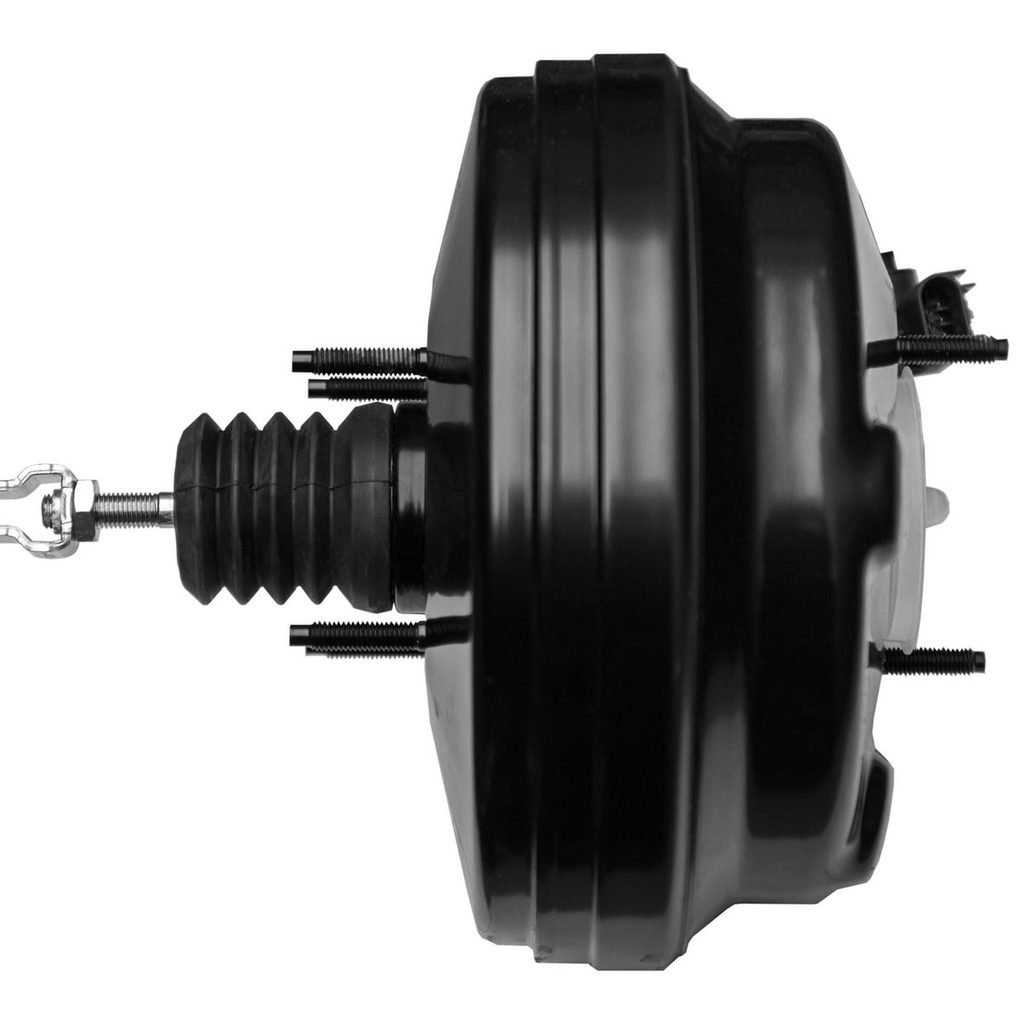Top Bad Brake Booster Symptoms
Updated: Apr. 01, 2024

Knowing the most common bad brake booster symptoms gives you early warning that the safety of your vehicle is at risk.
The Important Role of the Brake Booster
The brake booster plays an important role in stopping a car equipped with disc brakes. Located under the hood, the device delivers additional force to the car brakes and assists in stopping your vehicle. Without it, stopping distances would increase dramatically, putting the driver and passengers at greater risk of collision during an emergency stop.
Inside the brake booster, two chambers, separated by a diaphragm, experience a similar drop in pressure as air rushing into the engine, through the air intake, creates a vacuum. Engaging the brake pedal opens a valve and air is drawn into one side of the booster. This allows the vacuum, present on the other side, to pull on the diaphragm. A rod, attached to the brake pedal assembly, runs through the center of the diaphragm on its way to the master cylinder piston.
As the rod transfers the force applied to the brake pedal, the diaphragm also pulls on the rod and increases the force against the master cylinder piston. The combined force slows the car quickly and easily. By releasing the brake pedal, the valve closes and the system returns to balance.
If you recognize the following bad brake booster symptoms, take action immediately — don’t ignore them. They indicate that your car has become unsafe to drive.
Stiff Brake Pedal Action
A bad brake booster makes the brake pedal much harder to depress. As the booster fails, it loses its ability to provide additional force against the master cylinder piston. The driver of the vehicle must now provide all of the braking power — a difficult task.
Increased Braking Distance
Sometimes a brake booster will fail gradually, making the decline in performance harder to notice. If you feel like you must brake earlier than you should to come to a stop, have the brakes checked. If the pads and rotors look good, the cause could be the brake booster.
High Brake Pedal Position
Along with the stiffer resistance of the brake pedal under pressure, you may also notice the pedal “travels” less than normal when the brakes are engaged. With the booster chambers out of balance, pedal return may be slower than normal.
Poor Engine Function
A hole in the diaphragm allows the booster to draw air into the induction system. This situation can effect the fuel mix in the engine because of the booster’s connection to the main air intake. In newer, fuel-injected vehicles, this results in reduced fuel economy because the computer compensates for the difference. In older cars, brake booster failure may cause the engine to run lean with insufficient fuel in the cylinder.
Without the full cooling action of the proper measure of gas, friction increases and the temperature of engine parts rise, leading to pre-ignition (the fuel ignites before the spark plug fires). This might be heard as pinging, or felt as a loss of engine power. Allowed to continue, pre-ignition can lead to burnt valves or piston damage, requiring a costly repair.
Test Your Brake Booster
Starting with the engine off, pump the brakes several times. (Brake booster design allows the mechanism to hold enough vacuum to engage the brakes once or twice without the engine running. This helps you stop the vehicle in the case of engine failure.) Next, press on the brake pedal lightly while starting the engine. You should feel the pedal give a bit and then firm up. If it becomes hard or if you feel no change at all, then the brake booster has failed.
